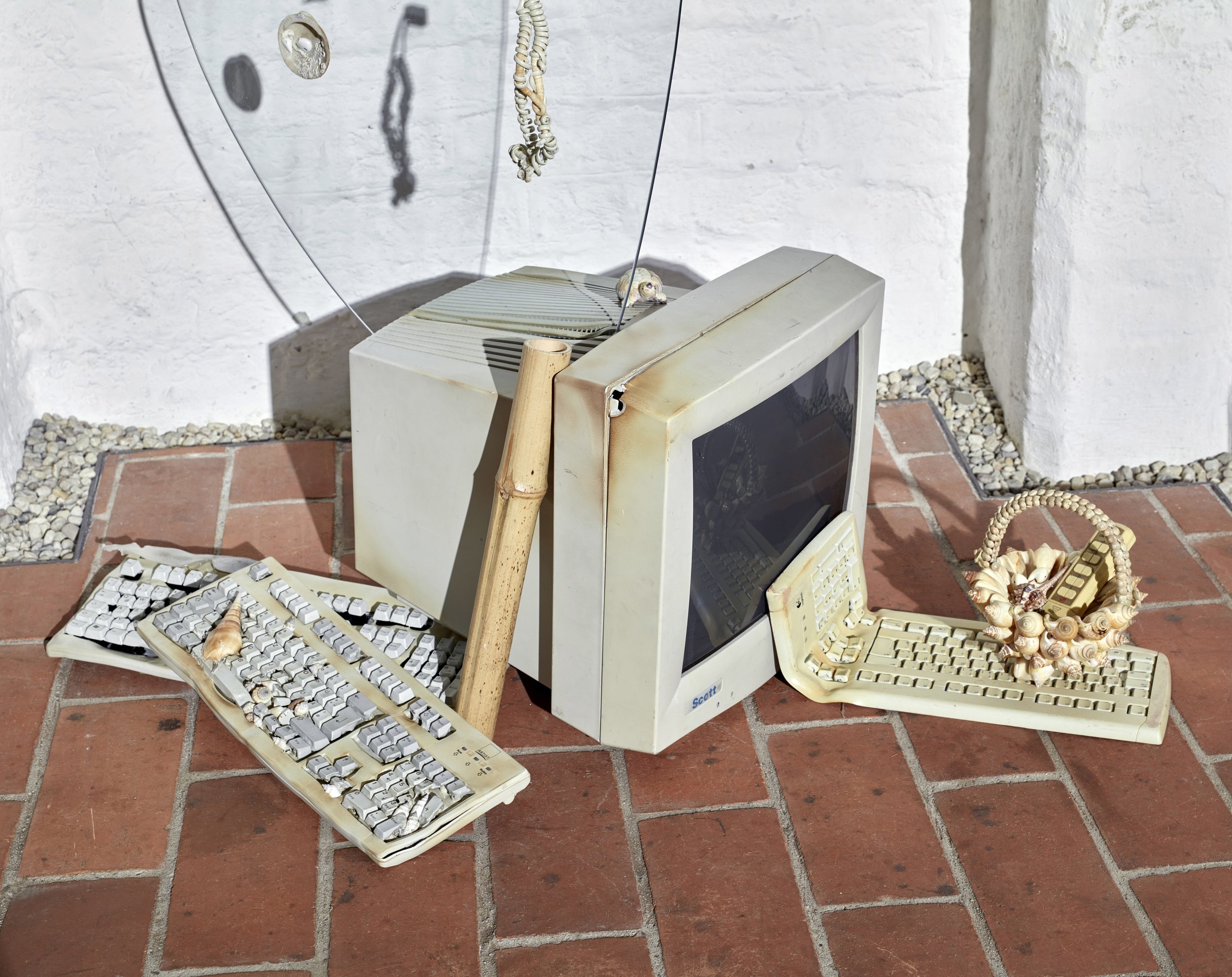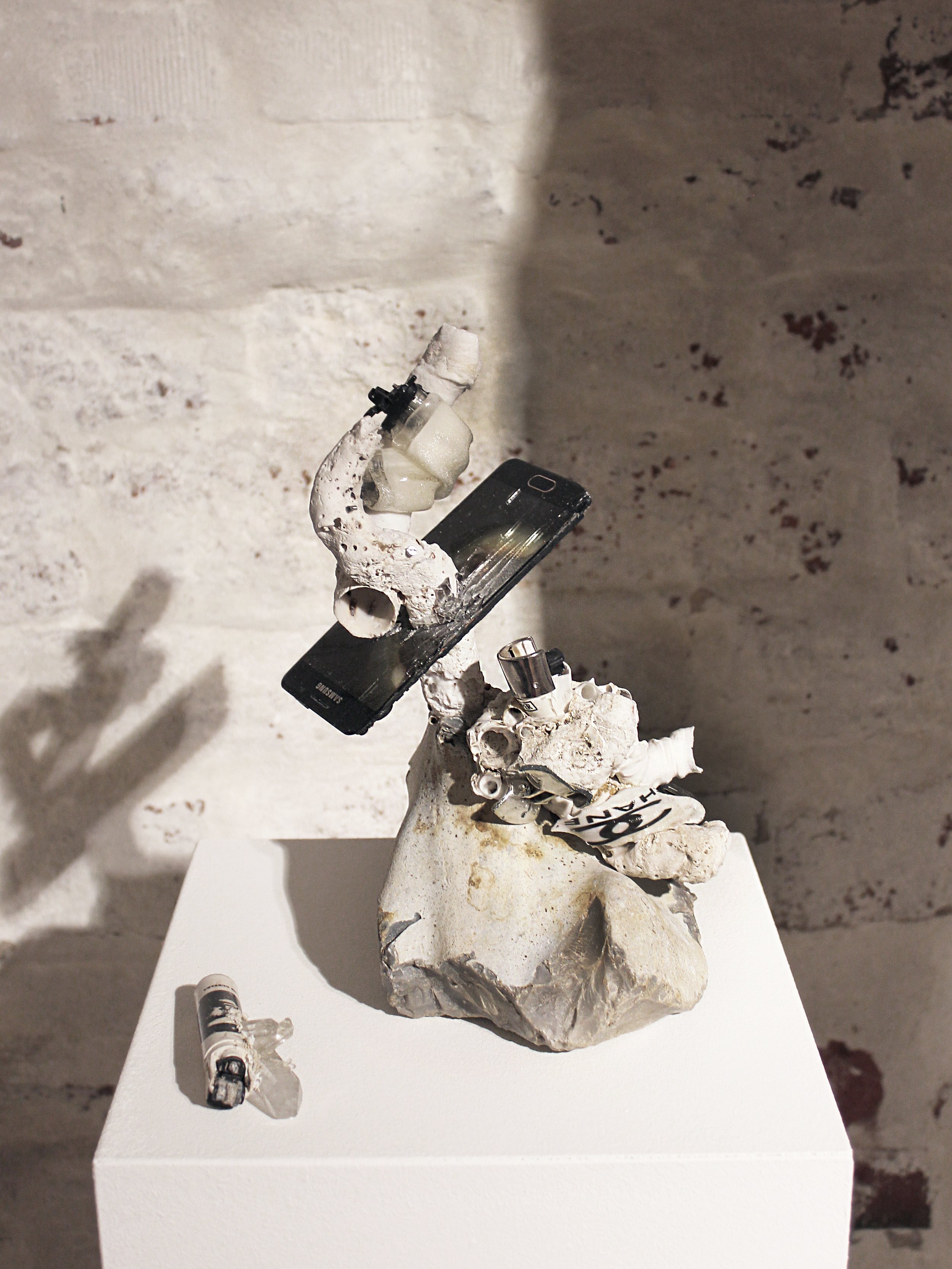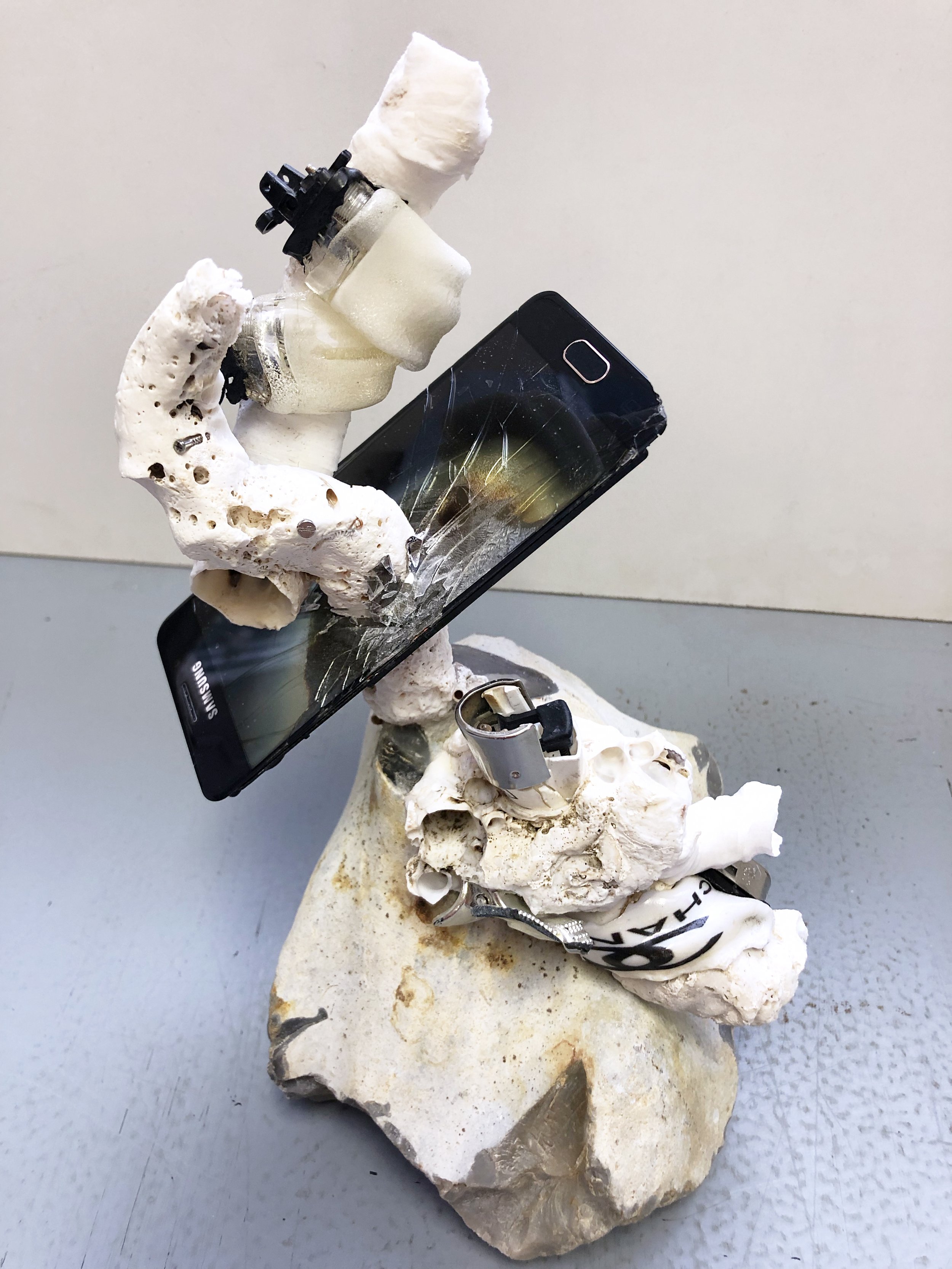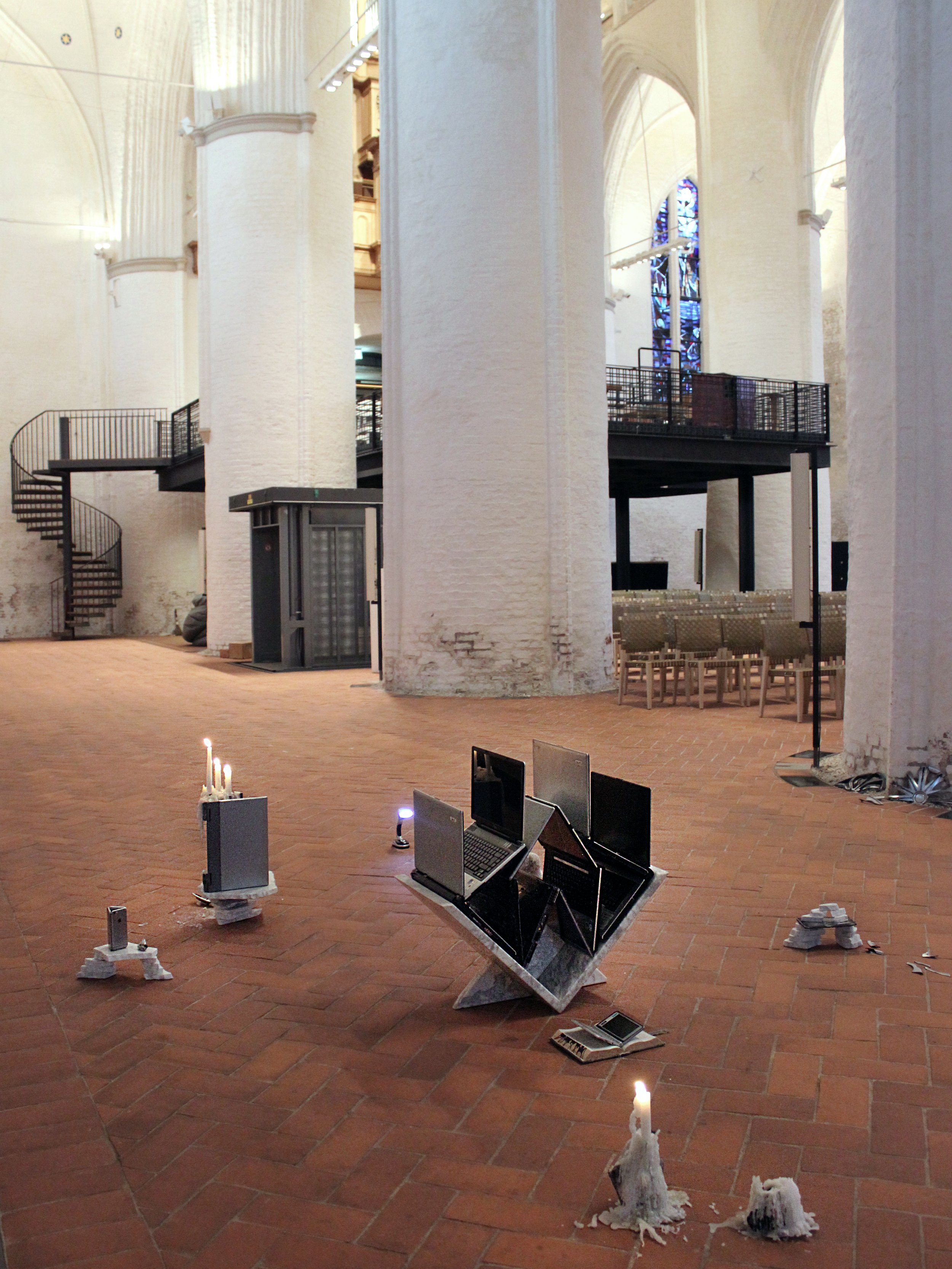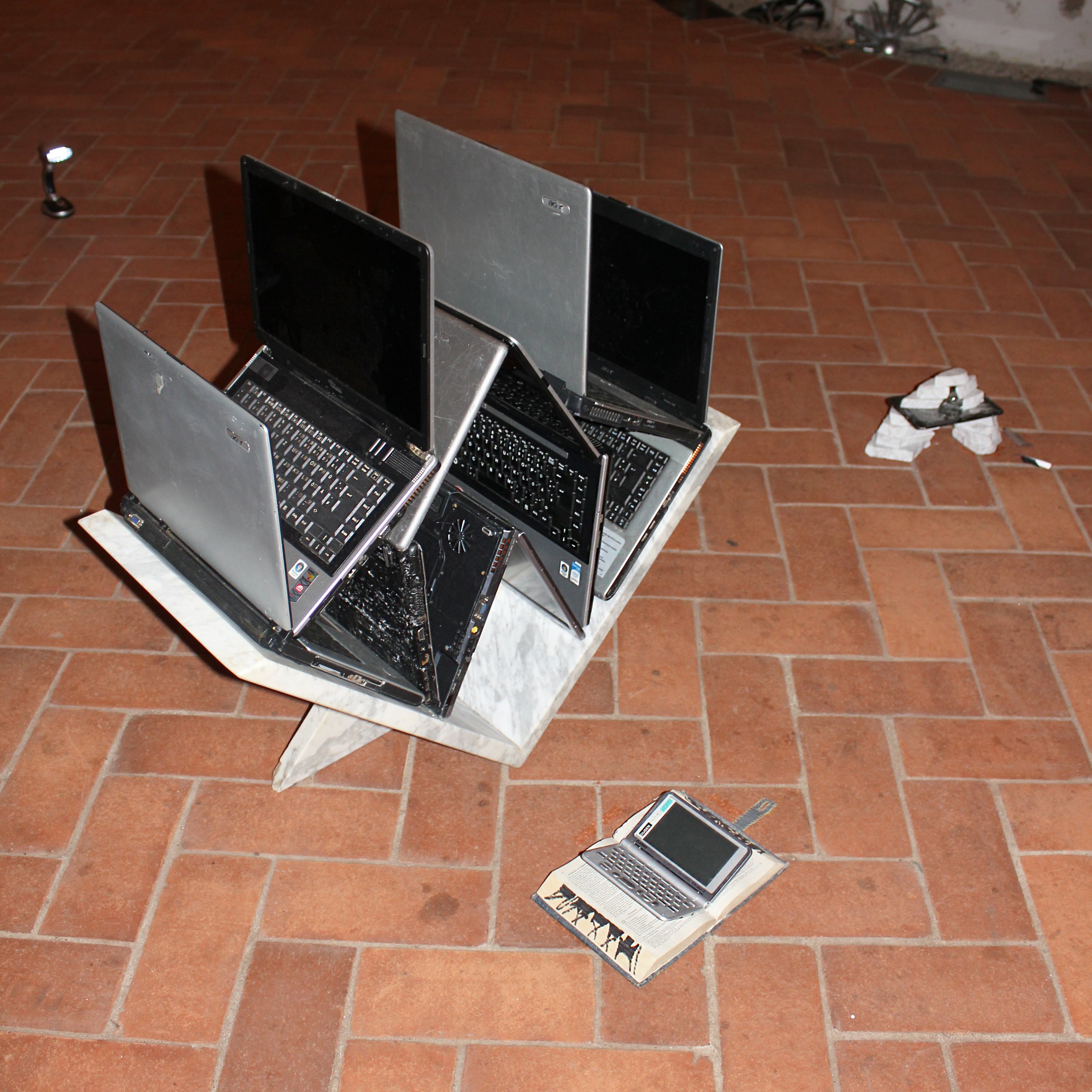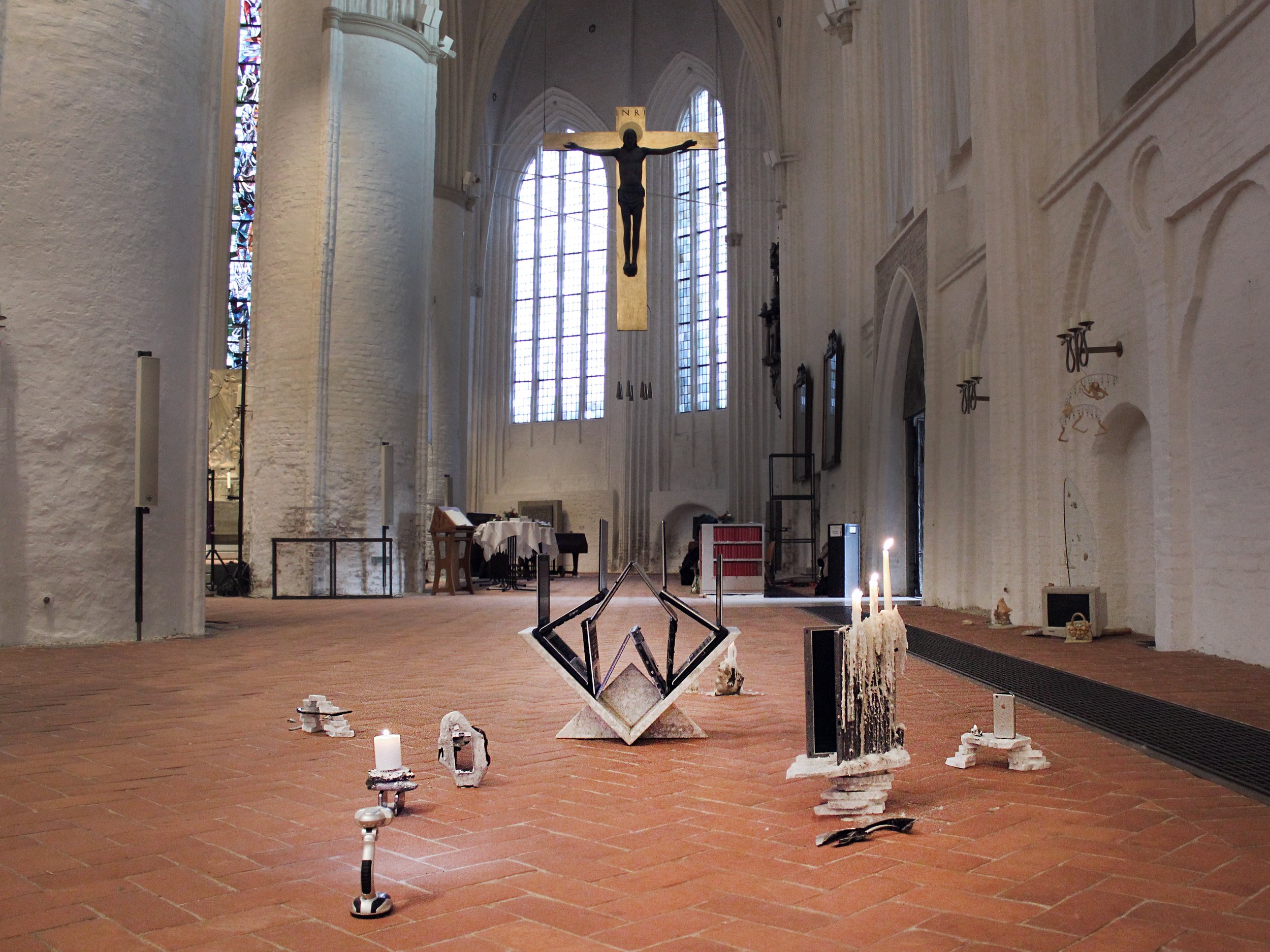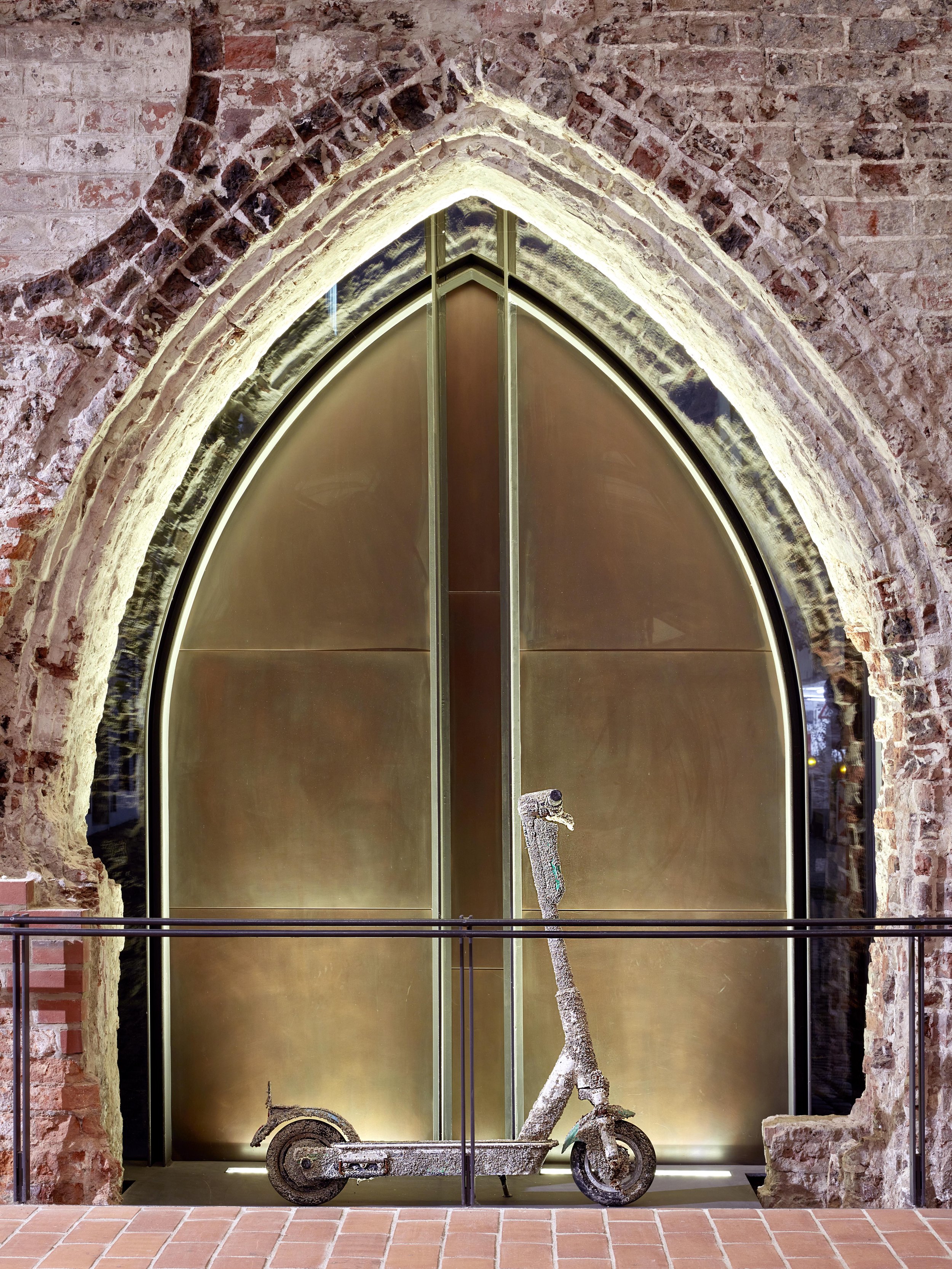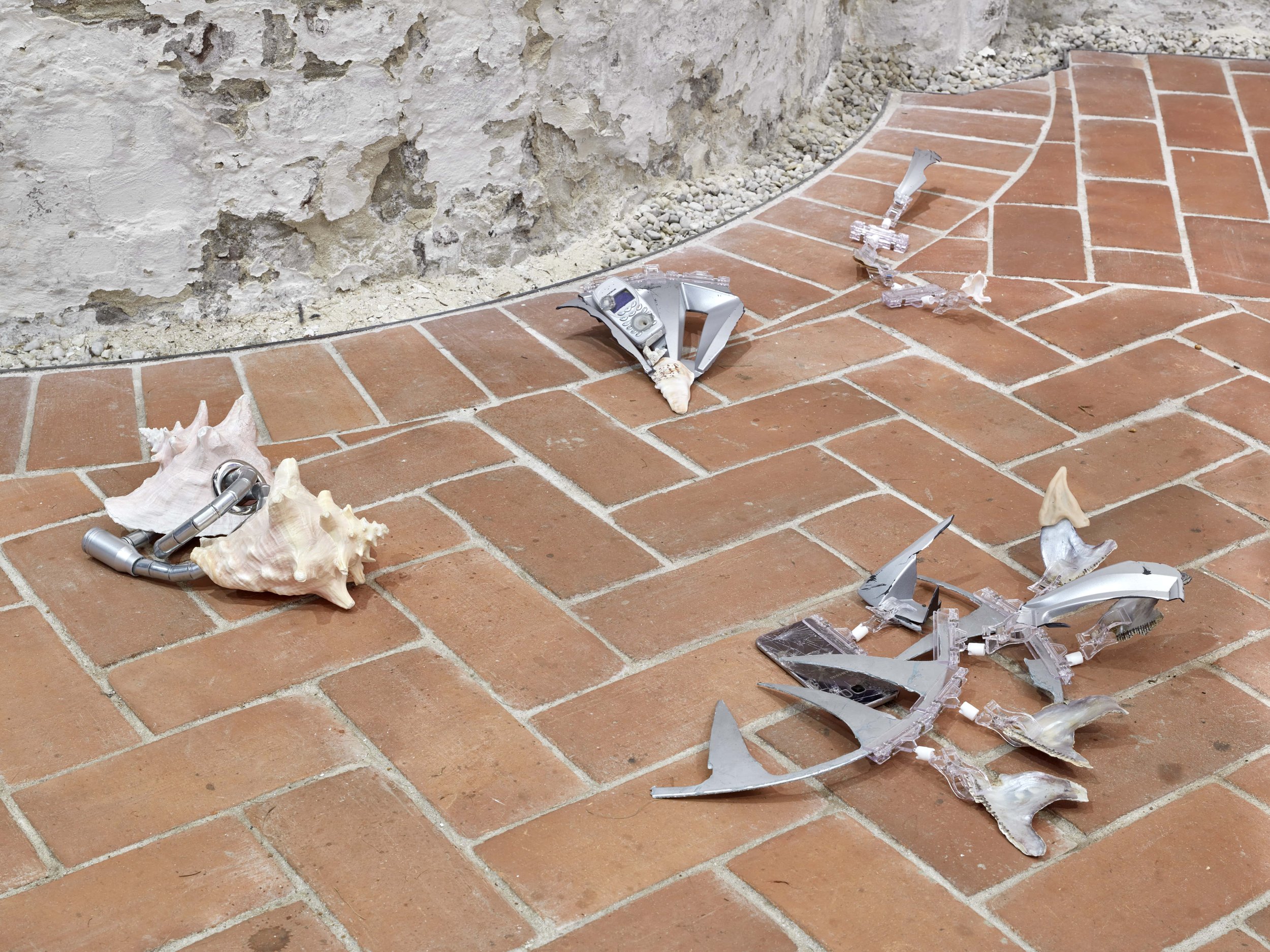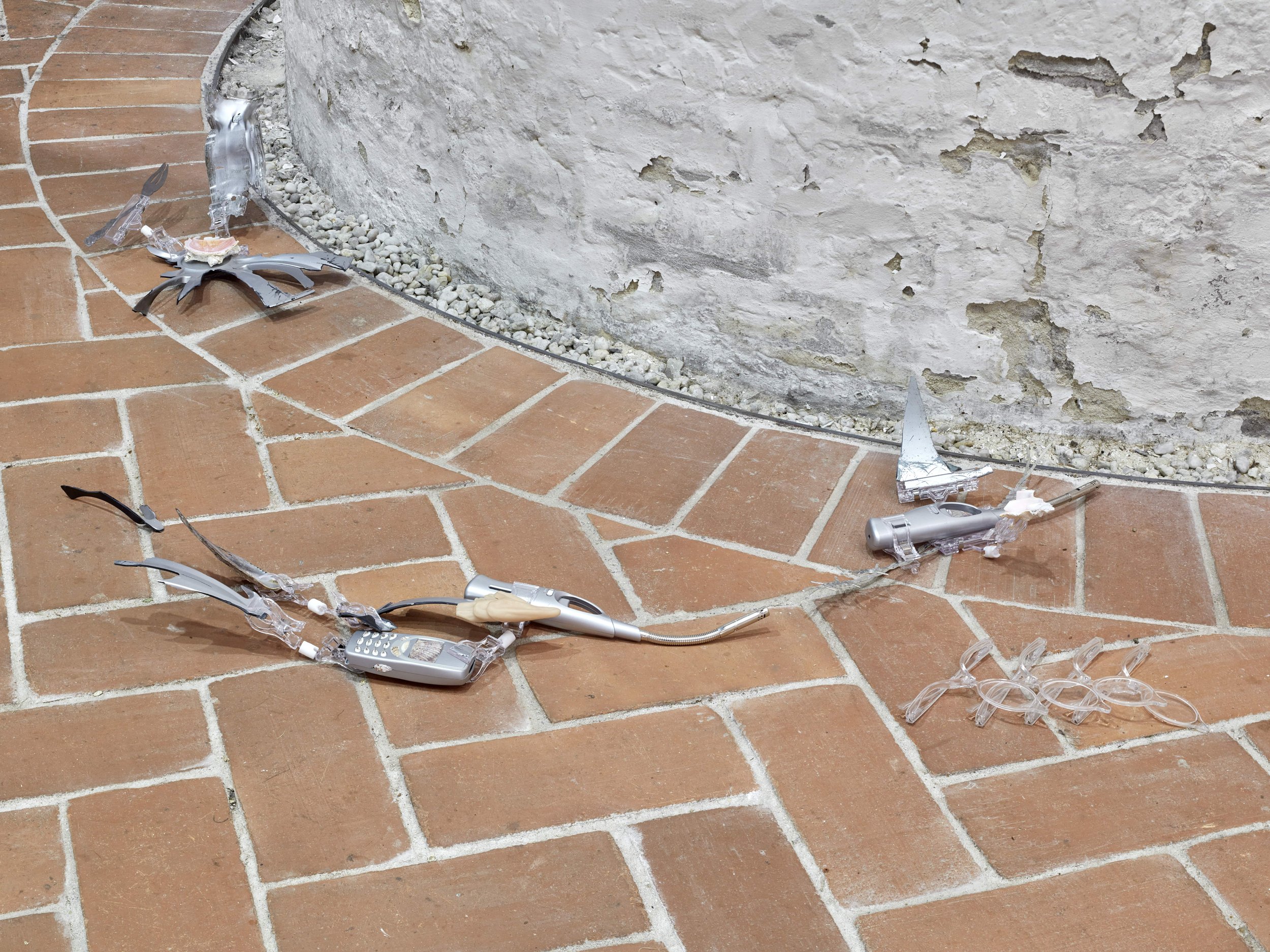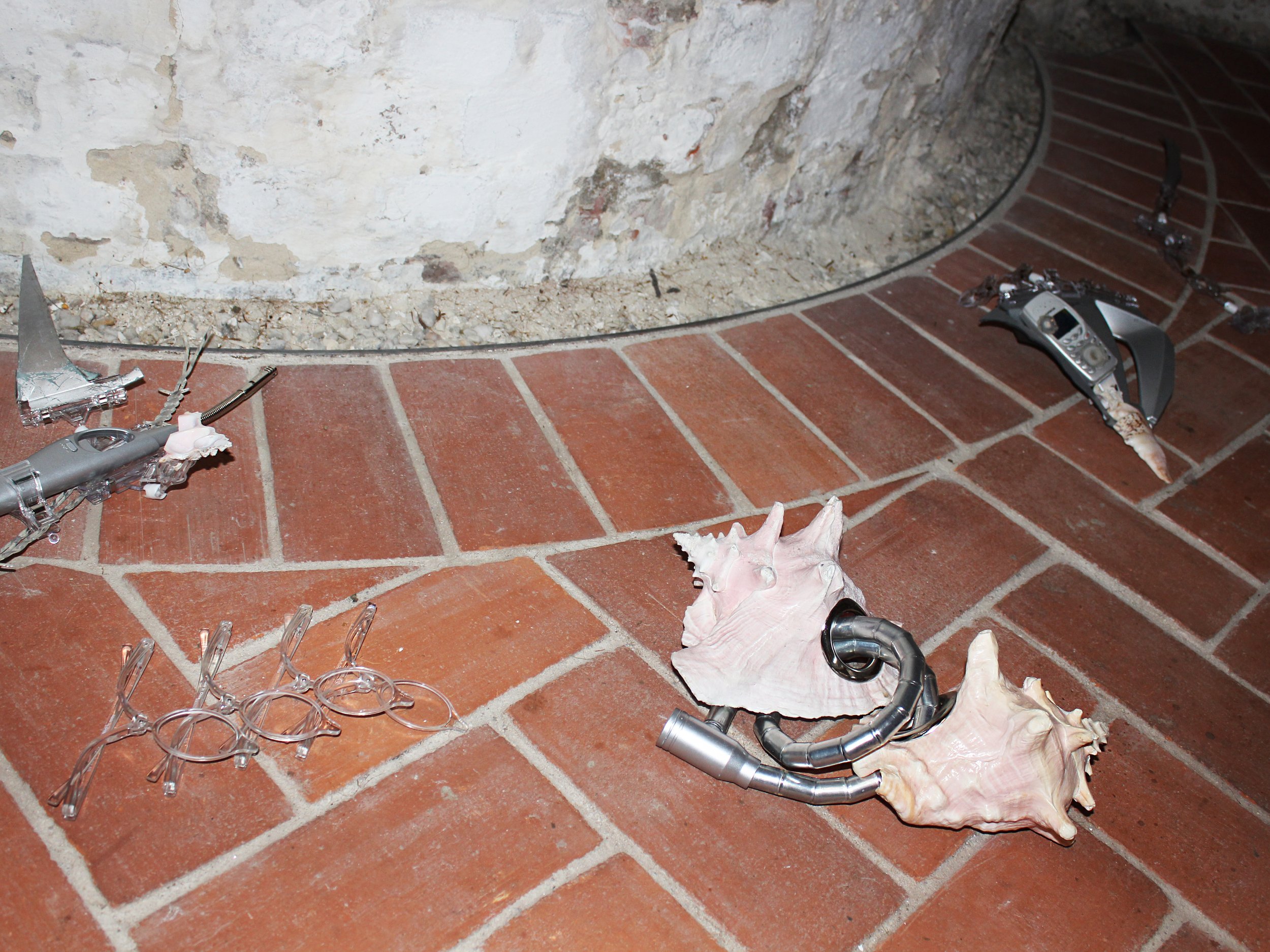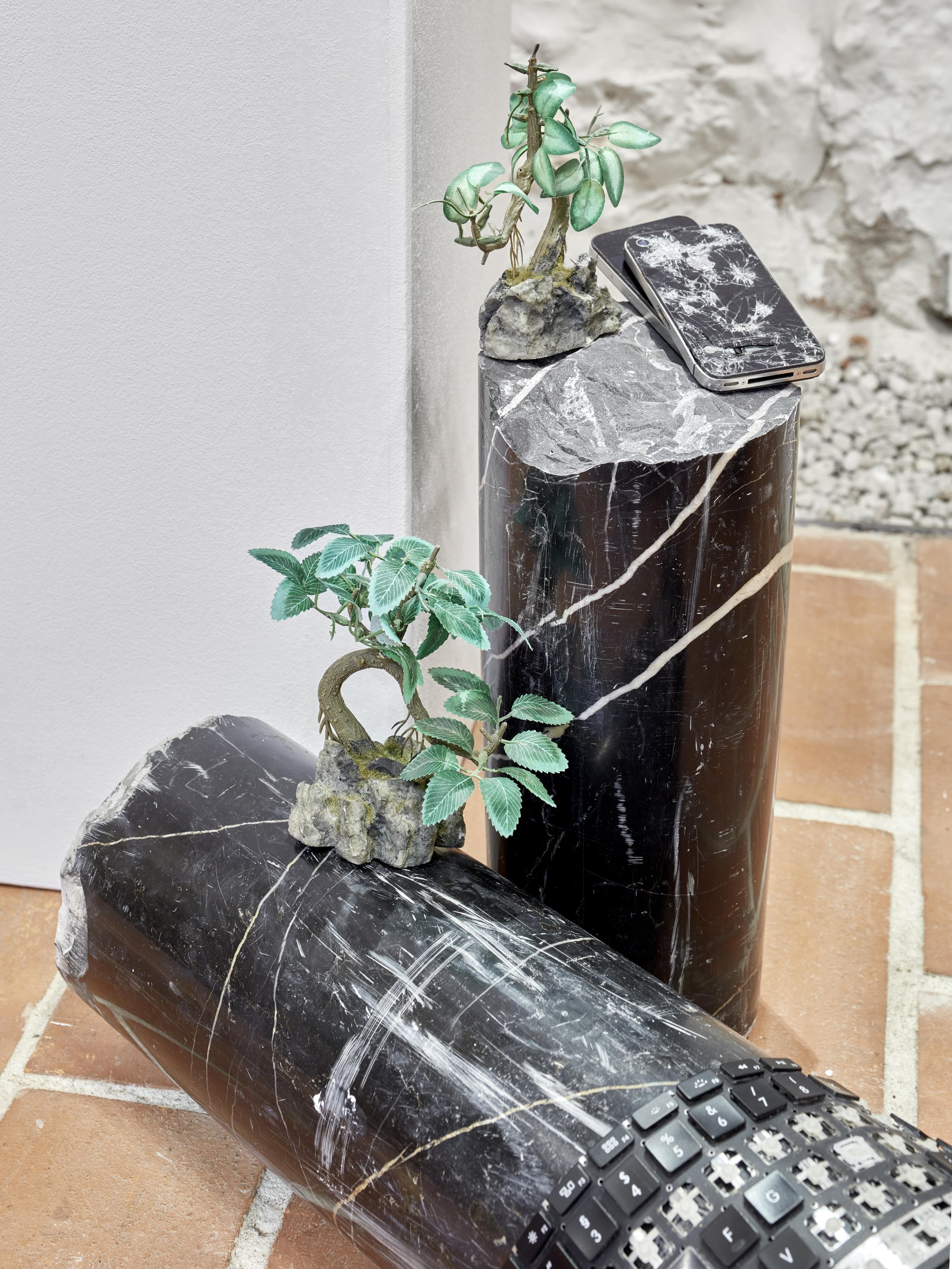Material Testament of the Never-Finished
The capitalist relationship to nature is on the linear path of commodification. Rivers become canals. Fossils become fuel. In the search for supplies for this system, an exploitive human-nature relationship proceeded to bore its signature into the layers of the earth with jackhammers and excavators. We call this geological epoch the Anthropocene.
If we listen to the matter, it helps us to question this relationship. In her own language, she reveals to us evidence of external violence and of arduous journeys. A Material Trauma made legible in traces inscribed in the material itself. There are indications of great pressure and heat, of impacts and blows, materialization of forces so great as to derail our internalized knowledge of the properties of our material world. Hybrids and symbioses co-conspire; affinities between bone and technology, fraternization of plastic and stone reveal the malleability of the objects as we know them; this materiality in decay is evidence and confirmation of a post- apocalyptic present.
Conversely, a society, which translates matter into property and possessions, is a particularly vulnerable one. We’ve entrusted matter with a plethora of supernatural duties- as heirlooms, souvenirs, status symbols and religious relics. Their loss, is for such a society, a traumatic experience.
But what happens when these objects fall outside our field of vision? They embark on their post-consumer lives in a place we call Thrown Away. Here with the help of non-human agents, our ready-made objects shed themselves of their market identities and rejoin the synchronicity of becoming and having been nature. Nature contradicts the idea of the “ready-made”. The “ready-made” becomes the “never-finished”. The objects here begin to tell a story about care, about composting relationships; a story woven into their material flesh beside the battle wounds of their past lives.
As an artistic practice, Corrina collects these narratives in her carrier bag. As Le Guin demands in her essay, collectors can enter completely different imaginary worlds, ones in which dichotomies such as light and dark, good and evil dissolve. These worlds refuse to become a new dogma. Instead, they affirm the exchange and the process as the result. The scenery is one of contemplation and reconciliation. A meeting point of allies, united in troubled states, full-heartedly embracing ambiguity.
Text by Juri Nietzling and Corrina Goutos
